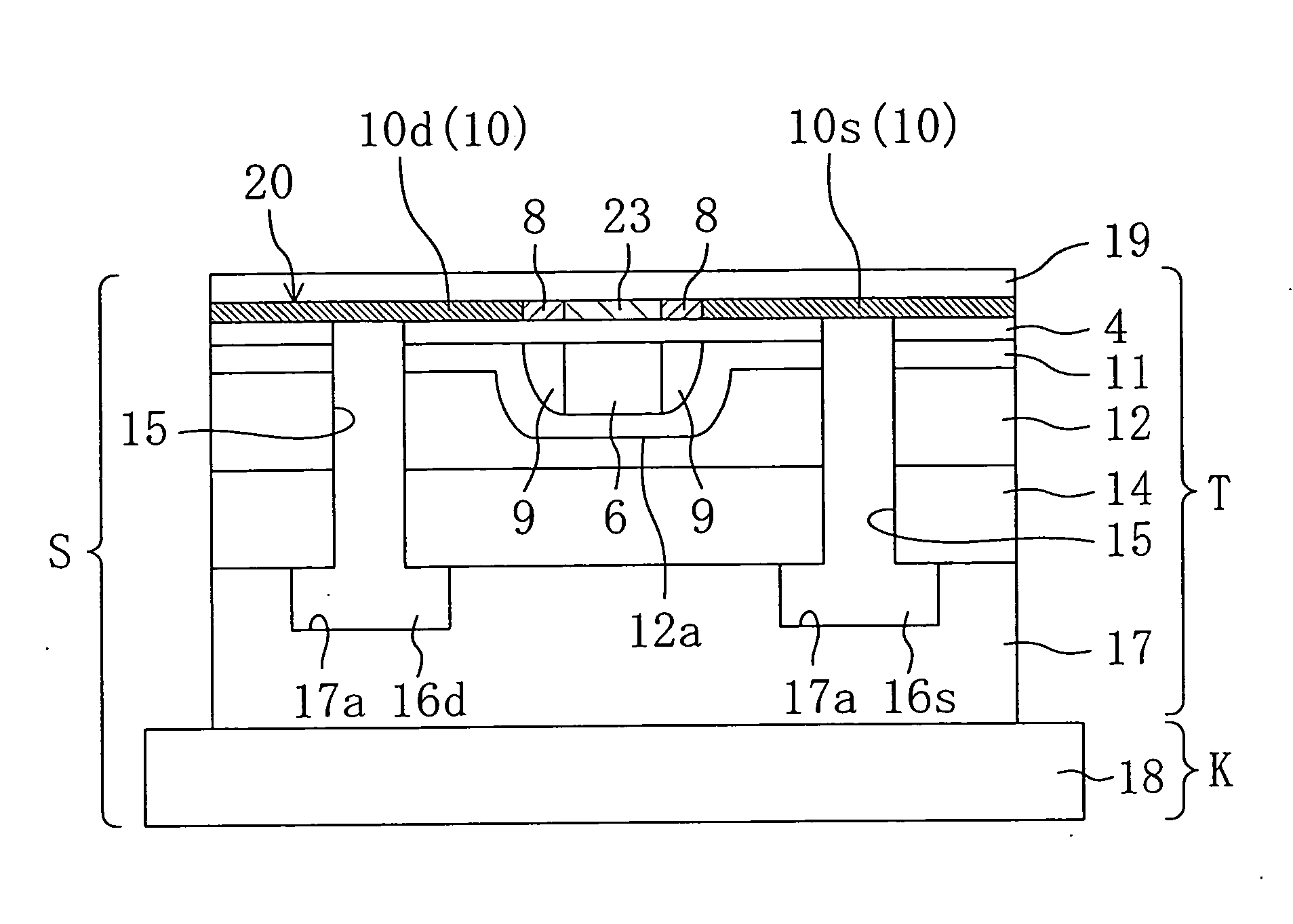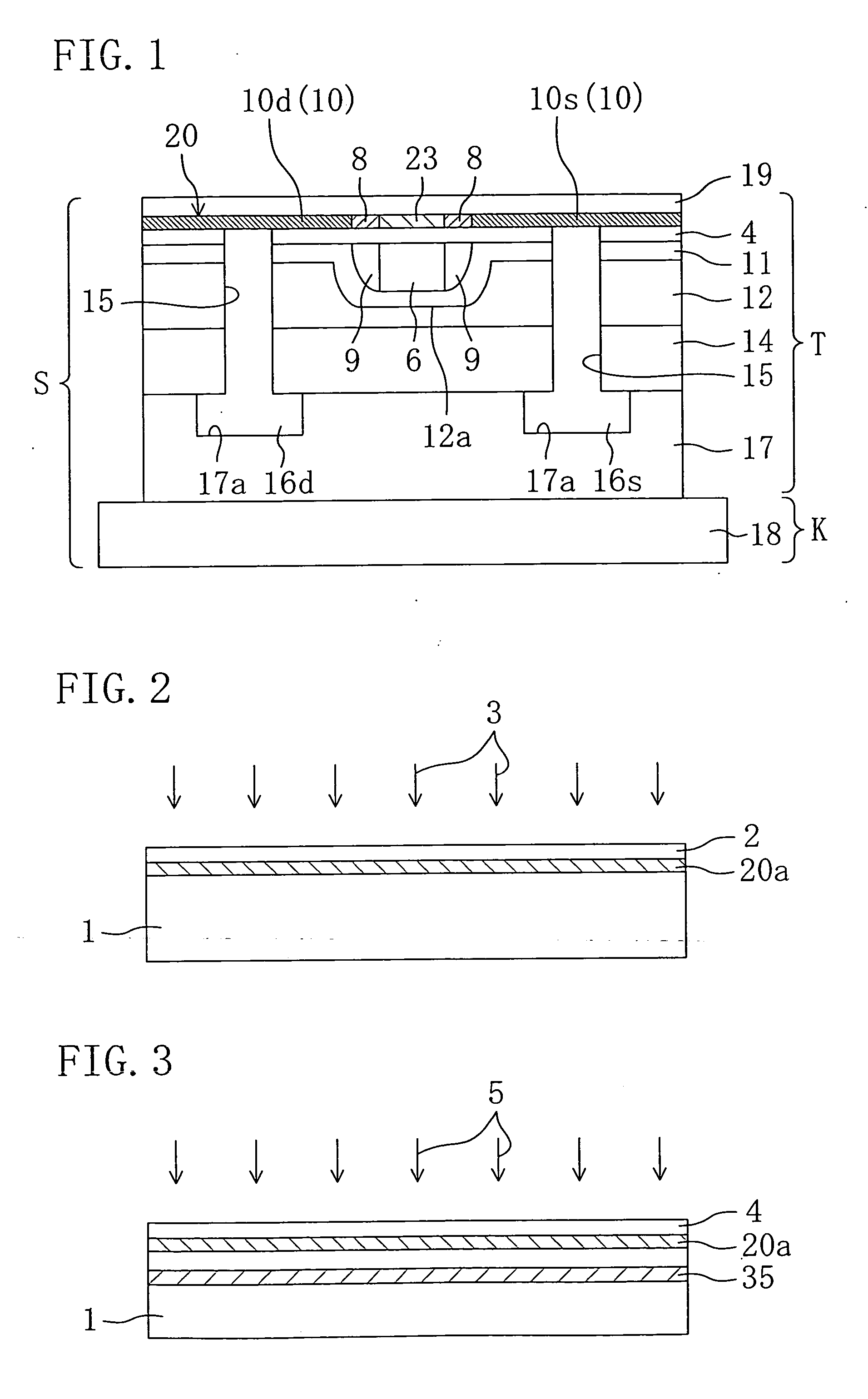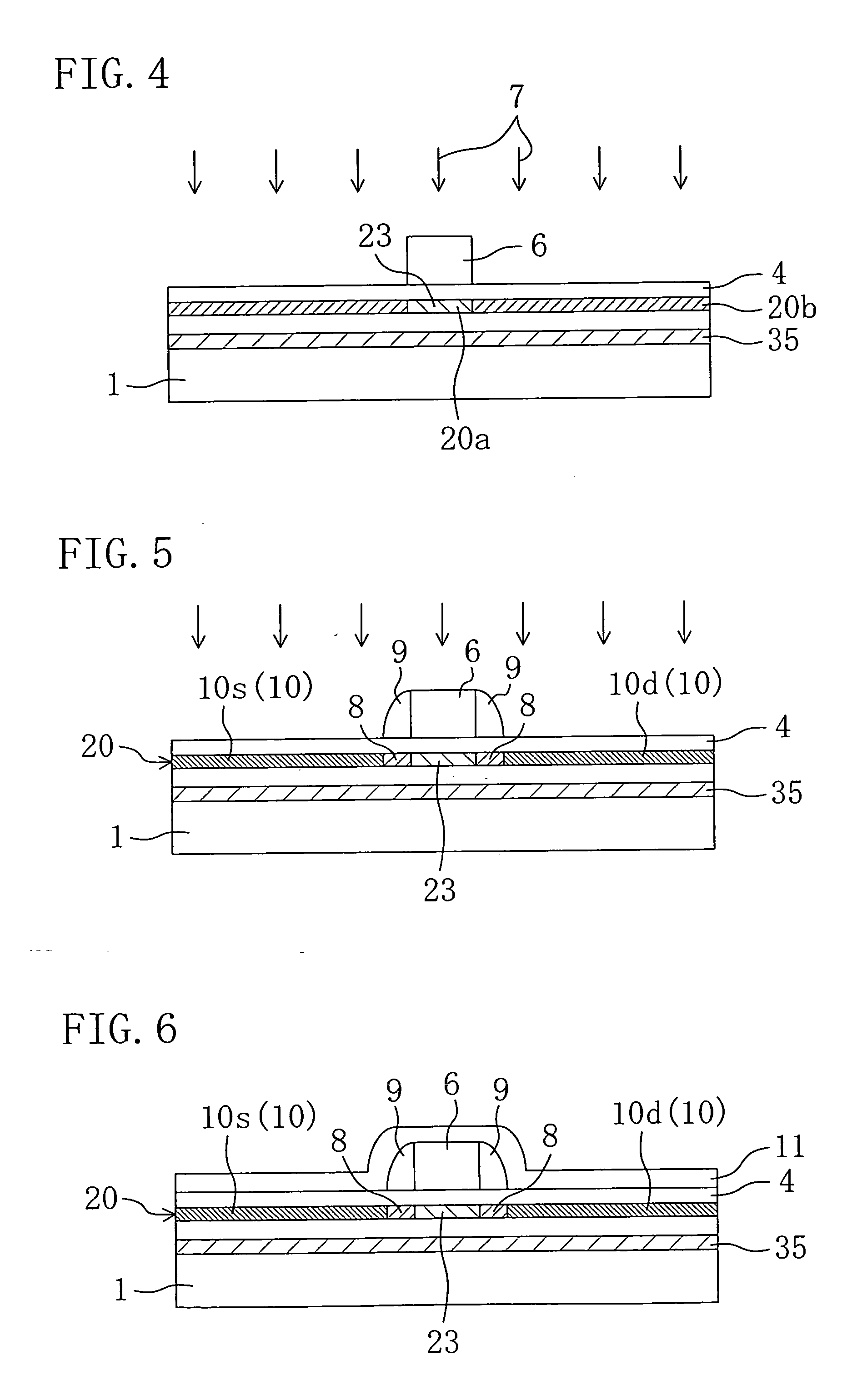Method for manufacturing semiconductor substrate and semiconductor substrate
a manufacturing method and semiconductor technology, applied in the direction of semiconductor devices, electrical devices, chemistry apparatus and processes, etc., can solve the problems of substantially impossible to remove hydrogen from the soi substrate on which the semiconductor elements have been formed, the threshold voltage shift is caused on the semiconductor elements, and the impurity properties of the semiconductor elements change, so as to achieve the effect of reducing adverse effects
- Summary
- Abstract
- Description
- Claims
- Application Information
AI Technical Summary
Benefits of technology
Problems solved by technology
Method used
Image
Examples
embodiment 1
[0108] FIGS. 1 to 11 are sectional views according to Embodiment 1 of the present invention. In Embodiment 1, a semiconductor element T is completed on a substrate and then the substrate is bonded to another substrate K (hereinafter referred to as substrate K) to obtain a semiconductor device S. For the sake of convenience, expressions related to position and direction such as top and bottom, right and left, are based on the drawings when viewed from the front.
[0109] In general, the semiconductor element T includes a plurality of NMOS transistors and / or PMOS transistors formed on a single substrate. However, for a simple explanation, it is assumed hereinafter that a single NMOS transistor is formed on the substrate. Though not clearly mentioned, the PMOS transistor can be formed in a like manner by optionally changing the conductivity of ions to be implanted. It should be understood that there is no intention of excluding the case of forming a single transistor. Although no referen...
embodiment 2
[0154] FIGS. 13 to 23 are sectional views illustrating a semiconductor substrate and a method for manufacturing the same according to Embodiment 2 of the present invention. In the following embodiments, the same components as those shown in FIGS. 1 to 11 are given with the same reference numerals and a detailed explanation is omitted.
[0155] In this embodiment, a silicon substrate layer L in which a semiconductor layer 20 will be formed is transferred to a substrate K in advance and then the semiconductor element T is formed thereon.
[0156] In general, the semiconductor element T includes a plurality of NMOS transistors and / or PMOS transistors formed on a single substrate. However, for a simple explanation, it is assumed that a single NMOS transistor is formed on the substrate. Though not clearly mentioned, the PMOS transistor can be formed in a like manner by optionally changing the conductivity of ions to be implanted. It should be understood that there is no intention of excludin...
embodiment 3
[0184] FIGS. 24 to 32 are sectional views illustrating a semiconductor substrate and a method for manufacturing the same according to Embodiment 3 of the present invention.
[0185] In this embodiment, part of the semiconductor element T is formed before the bonding step and the other part of the semiconductor element T is formed after the bonding step.
[0186]FIG. 24 is a sectional view schematically illustrating a semiconductor device S including a substrate K and a semiconductor element T. In general, the semiconductor element T includes a plurality of NMOS transistors and / or PMOS transistors formed on a single substrate. However, for a simple explanation, it is assumed hereinafter that a single NMOS transistor is formed on the substrate. Though not clearly mentioned, the PMOS transistor can be formed in a like manner by optionally changing the conductivity of ions to be implanted. It should be understood that there is no intention of excluding the case of forming a single transisto...
PUM
| Property | Measurement | Unit |
|---|---|---|
| temperature | aaaaa | aaaaa |
| temperature | aaaaa | aaaaa |
| softening point | aaaaa | aaaaa |
Abstract
Description
Claims
Application Information
 Login to View More
Login to View More - R&D
- Intellectual Property
- Life Sciences
- Materials
- Tech Scout
- Unparalleled Data Quality
- Higher Quality Content
- 60% Fewer Hallucinations
Browse by: Latest US Patents, China's latest patents, Technical Efficacy Thesaurus, Application Domain, Technology Topic, Popular Technical Reports.
© 2025 PatSnap. All rights reserved.Legal|Privacy policy|Modern Slavery Act Transparency Statement|Sitemap|About US| Contact US: help@patsnap.com



